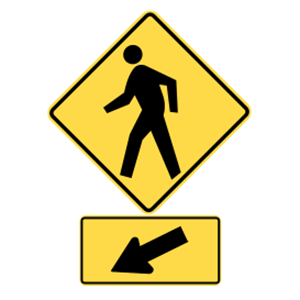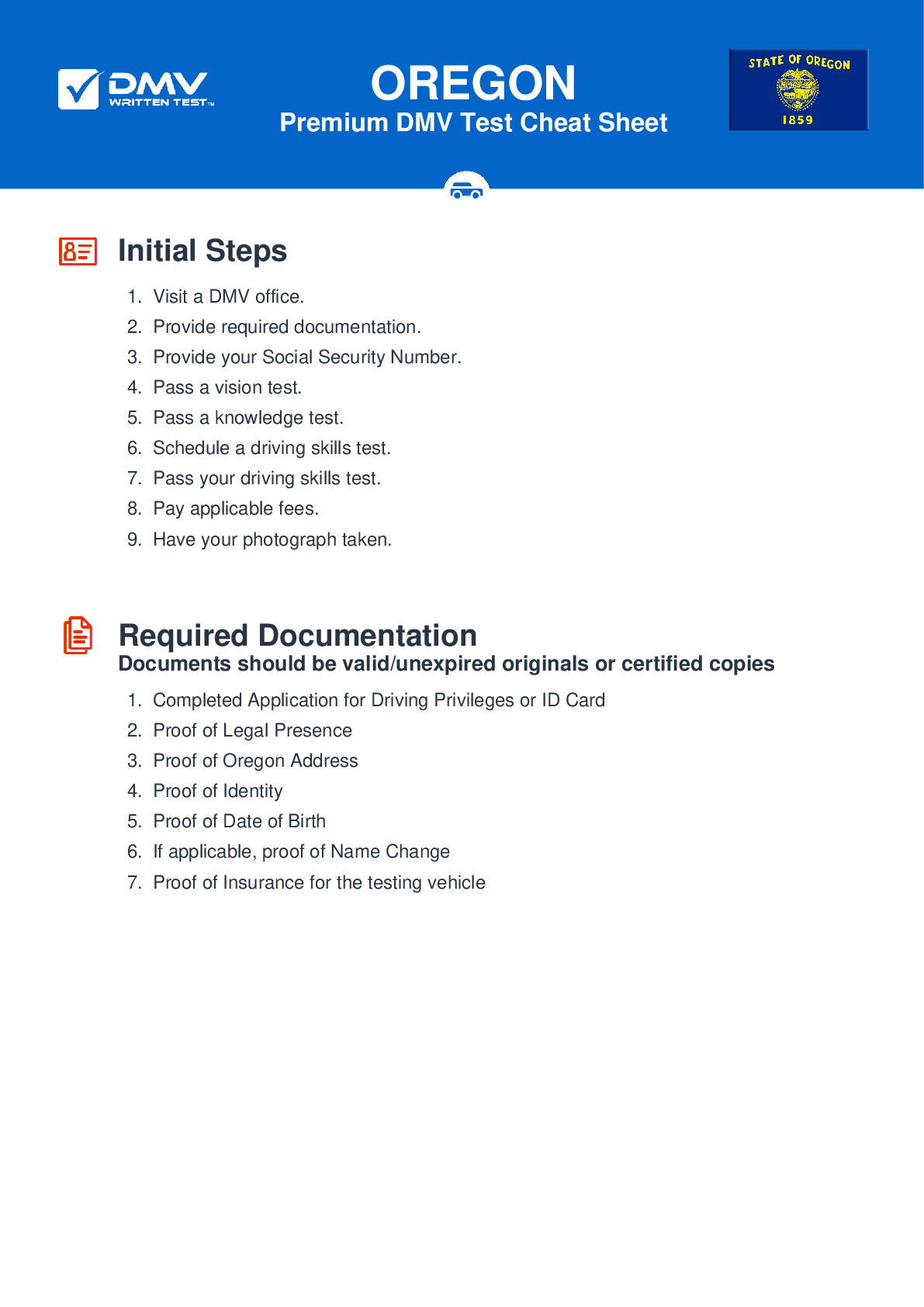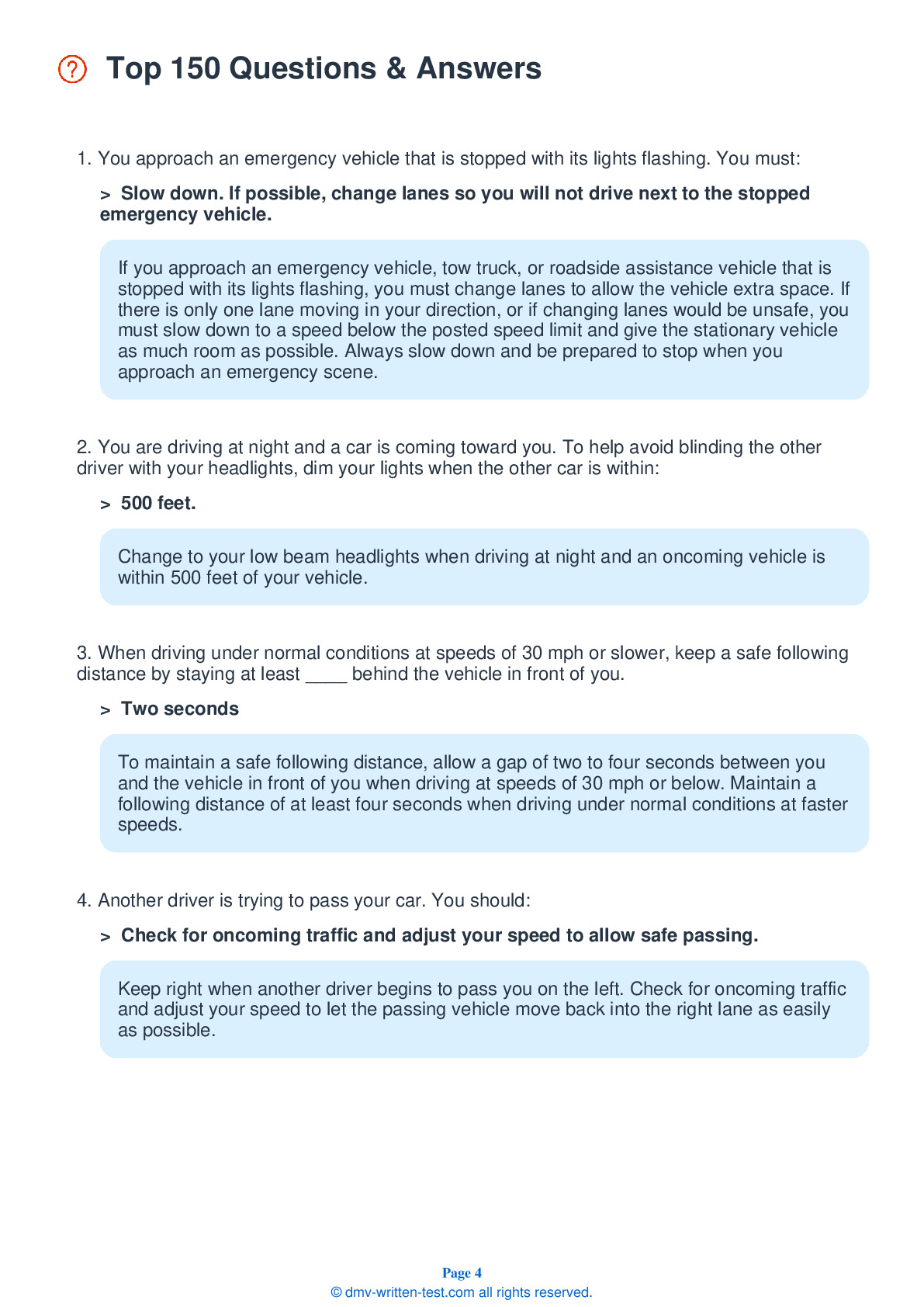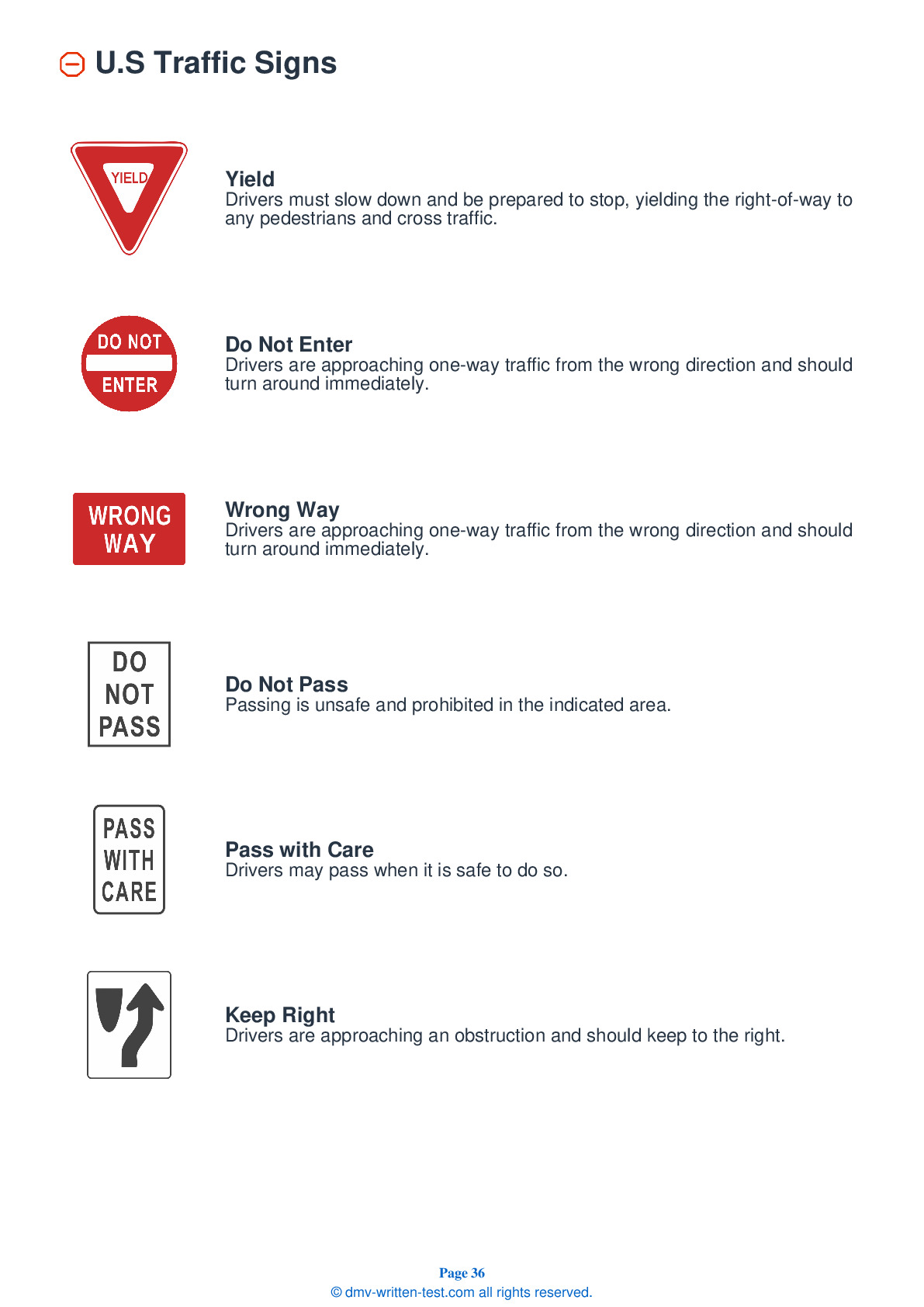2025 Oregon Permit Test 4
The following questions are from real DMV written tests. These are some of the actual permit questions you will face in Oregon. Each permit practice test question has three answer choices. Select one answer for each question and select "grade this section." You can find this button at the bottom of the drivers license quiz. For a complete list of questions and answers for Oregon please visit https://cheat-sheets.dmv-written-test.com/en/oregon/car.
Number of Tests
Number of Question
Passing Score
15. This sign means:

Explanation
This sign indicates the presence of a pedestrian crossing. Drivers should be cautious when driving where pedestrians may be present.
16. If you begin to feel tired while driving, the best thing to do is to:
Explanation
Being fatigued while driving is similar in danger to driving under the influence of alcohol. If you begin to feel tired while driving, the best thing to do is to stop driving.
17. To drive safely at night, you should:
Explanation
At night, visibility is reduced. Take steps to make driving in the dark more safe for you and the other drivers on the road.
18. When driving on major highways:
Explanation
It is important to stay alert on highways and be ready to react to unexpected hazards. To avoid "highway hypnosis," you should avoid looking at any one thing for more than a few seconds.
19. The most effective thing you can do to reduce your risk of being injured or killed in a traffic crash is to:
Explanation
Wearing your seat belt is the single most effective thing you can do to reduce your risk of death or injury while driving.
20. If your car breaks down on a highway, you should:
Explanation
If your vehicle breaks down on the highway, you should signal before carefully exiting the roadway and turning on your hazard flashers. Get as far off the road as possible and park in a location where other drivers can easily see you. Lift your hood to let other drivers know your vehicle is disabled.
21. Which statement about speed is true?
Explanation




